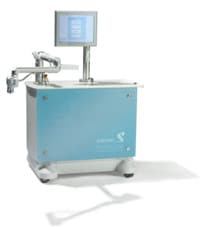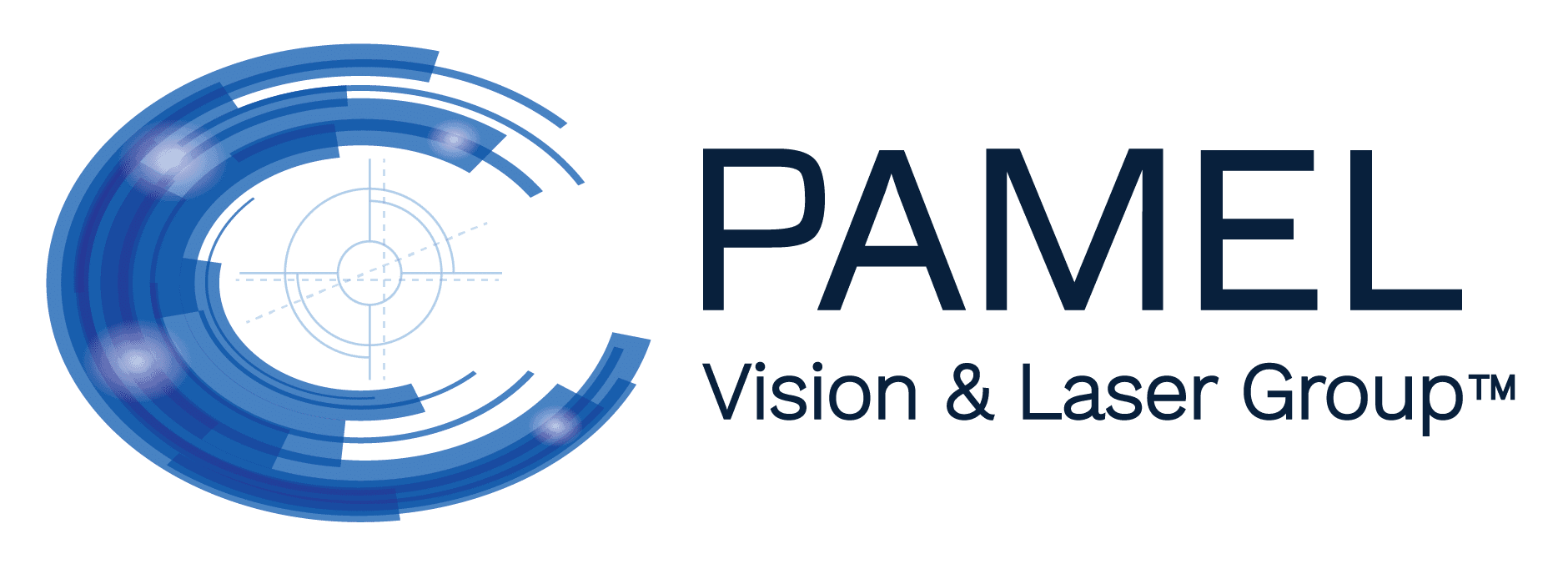Bladeless LASIK in NYC
ALL-Laser LASIK
Dr. Pamel is the first doctor in New York to utilize the most advanced, all-laser, bladeless LASIK system called Z LASIK. Developed by the Ziemer Group in Switzerland, this femtosecond technology is the fastest and most accurate bladeless LASIK technology available. Unlike other bladeless laser eye surgery systems which require higher levels of energy on the cornea, the Ziemer LDV uses less energy per pulse and is, therefore, more gentle on corneal tissue.

Ziemer LDV Femtosecond Laser
This technology is the most advanced bladeless technology available and will provide your eyes the safest and most accurate vision restoration treatment. It is able to create thinner flaps than a standard microkeratome, which means that it can treat patients who otherwise may not be a candidate for LASIK surgery. Thin flaps are also safer in that they do not weaken the cornea as much as flaps made with a blade. In combination with the Wavelight Allegretto laser, the Ziemer LDV gives superior results and is safer than a standard microkeratome procedure, which uses a blade.

This image of a cross section of the cornea using optical coherence tomography (OCT) shows the thin flap created by the Ziemer LDV.
It provides a faster treatment and less energy, less induced inflammation and therefore less chance of complications than the Intralase FS system. Call today for your free consultation to determine if you’re a candidate for the no-cut, bladeless LASIK procedure.
Take a look at our Bladeless LASIK Eye Surgery Reviews from previous New York City eye care patients.

 Gregory J. Pamel, M.D.
Gregory J. Pamel, M.D.
Dr. Pamel was recently honored as a board-certified fellow in the inaugural class of the World College of Refractive Surgery and Visual Sciences. Dr. Pamel was among 1000 surgeons worldwide out of 280,000 ophthalmologists to be unanimously selected for this achievement. He was recognized for his surgical expertise and contribution to the education and advancement of Refractive surgery over the last twenty years. This honor is a testament to Dr. Pamel's commitment to provide the highest quality vision correction surgery. Read more.





LASIK Surgery FAQs
Skilled and board certified New York City LASIK Surgeon Dr. Gregory Pamel provides answers to those seeking laser vision correction surgery.
What is LASIK surgery?
LASIK Surgery is an in-office procedure performed at Dr. Pamel’s Upper East Side offices, where he treats Manhattan and Queens patients. LASIK stands for laser in-situ keratomileusis, which means treating the cornea with a laser. LASIK surgery involves creating a thin flap of corneal tissue using an automated device called a microkeratome. This part of the LASIK procedure requires about 10 seconds. Creation of the flap provides access to the central part of the cornea. The excimer laser is used to reshape the cornea by removing, or ablating, a microscopic layer of corneal tissue.
How long does the LASIK procedure take?
The laser portion of the procedure takes from between 5 and 30 seconds depending on the level of myopia/hyperopia and astigmatism being corrected. The Allegretto Wavelight is the fastest laser available. Speed is important because the faster the laser the less chance the cornea will have to dry and the more successful the outcome. Once Dr. Pamel has completed this portion of the procedure, the flap is placed back down to its original position. It takes around seven minutes to treat each eye. The corneal flap seals in its original position through osmotic and ionic forces. There are no stitches required in the operation.
The corneal flap becomes more secure the longer the period of time that has passed from the original procedure. The corneal flap can be re-lifted using special instrumentation up to 5-10 years after the initial procedure. After the first week, it is rare that the corneal flap will dislocate under normal circumstances.
Is LASIK surgery painful?
There is typically little pain or discomfort during the operation, though patients have reported a sensation of pressure from the lid speculum, an instrument designed to hold the eyelid open. Patients also report pressure when a suction ring is placed during the creation of the corneal flap. Following Allegretto Wavelight procedures at our office, your eyes may be red, watery, itchy, or irritated for four to eight hours. There are some cases of excessive tearing. Patients rarely experience any pain following the operation.
How long does it usually take for a patient’s vision to recover after the procedure?
Even with blurry vision, our patients report a marked improvement immediately after the procedure. Patients typically recover 90 to 99 percent of their vision in the 12 to 24 hours following the procedure. A patient’s vision is expected to gradually improve over the next several weeks.
When can I resume my normal activities like returning to work and driving?
Most patients can return to work and even drive the day after their operation. If you work on a computer or do significant amounts of reading, your eyes will experience dryness. During the early postoperative period, you will have to use artificial lubricating drops more frequently when doing these activities.
The only restriction you have following the procedure is to refrain from wearing makeup for one week postoperatively. You must also refrain from swimming or using hot tubs for the first two weeks after the operation. You will inevitably get some water in your eyes when taking a shower, but you should not let the shower hit you directly in the face for the first two weeks after the operation.
Will the LASIK procedure dry out my eyes?
The degree and frequency of eyes drying following the operation varies from person to person. Eyes that are dry occur after the procedure because the nerves that innervate the cornea are cut during the surgery. This causes decreased stimulus to blinking and hence less tearing. For some, the dryness following the operation can last for several months, which is why Dr. Pamel will instruct you to frequently use artificial tears after the procedure. The dryness will subside once the nerves in the cornea have grown back.
Can a person go blind from the operation?
As with any surgical procedure involving the eyes, this procedure does run the theoretical risk of blindness. This risk is extremely small, however, and would require a series of unlikely and catastrophic events to occur simultaneously. Optic nerve damage after the operation has been reported in a handful of cases in the medical literature. The risk of vision-threatening complications as a result of laser surgery with the Allegretto Wavelight at our practice is less than 0.1 percent. The doctor will review any complications with you when you visit our office for your free consultation.
Will I experience any halos or glare after getting LASIK?
In the immediate and postoperative period following the operation, some patients may experience halos or glare. These problems usually resolve within eight weeks of the procedure. Cases of permanent halos or glare are extremely rare but can be especially hazardous when driving at night. Patients with large pupils who have high prescriptions of visual acuity problems (>6.0 diopters) are at risk for developing glare following an operation. Patients who experience glare prior to the procedure when wearing contact lenses are also at risk, as are patients with severe visual problems. Dr. Gregory Pamel, a leading specialist, uses a special device called a pupillometer to measure your pupils in conditions simulating those at night. He will help you determine the benefits and potential risks of the procedures unique to your condition.
How does LASIK treat nearsightedness?
In the case of myopia (nearsightedness), the tissue removed is in the center of the cornea, which results in flattening of the cornea. For most patients, flattening of the cornea will allow incoming light rays to be focused on the retina.
How does LASIK treat farsightedness?
In the case of hyperopia (farsightedness), the tissue is removed in the periphery of the cornea, which results in a steepening of the cornea. This steepening is what allows patients to see clearly.
Can LASIK correct astigmatism?
The same procedure which treats farsightedness will also treat astigmatism at the same time by steepening the flatter meridian of the cornea and flattening the steeper meridian, bringing the light rays to one single point of focus on the retina.
What if I need my eyes adjusted after my LASIK procedure?
One of the many advantages to the LASIK procedure is that if there is residual nearsightedness or farsightedness after the initial procedure, the flap can be re-lifted and additional laser treatment can be performed to treat this residual refractive error. This is called an enhancement. Enhancements are required between 2-5% of the time in our practice depending on the amount of original vision loss.
The greater the amount of refractive error preoperatively, the greater the likelihood enhancement will be necessary at some point following the procedure. Enhancements are required because the cornea did not fully respond to the original laser treatment or the effect of the treatment regressed. As living tissue, the cornea will vary in its response to the laser treatment from individual to individual.
What are my financing or insurance options for LASIK?
Pamel Vision and Laser Group offers patients the option of using two different financing companies to finance their vision procedure. Both plans offer 0 percent interest for the first year. You can apply for financing in our office. Approval can be determined within an hour.
We participate in many insurance plans that cover the custom procedure. Call our office today if you think your insurance might cover all or a portion of the procedure. We would be happy to make all the necessary inquiries to determine your coverage.
Will LASIK have any effect on future cataract operations?
It will have no effect on the cataract operation itself. What will change, however, is how the lens implant power will be calculated prior to the procedure, since the cornea has now changed shape.
If a patient has cataracts, can LASIK procedures be performed?
Remember that the goal of the procedure is to reduce or eliminate a patient’s dependency on glasses and contacts. Cataract operations can also accomplish this goal with an implantable contact lens (which has a specific power that has been selected prior to the time of the procedure) so the operations would therefore not be necessary. If a procedure is performed on an eyeball that has a problem, the cataract would still have to be removed and the patient would be subjected to a second operation.
What about patients who have early cataracts and want a LASIK operation?
This question should be discussed in detail with the doctor. For those older patients who are very farsighted, Verisyse™ phakic lens implant procedure may be a better choice. The success rate is very high and may be a better alternative to the other procedures. In addition, by having vision corrected with a cataract operation instead of the other procedures, the patient avoids a second operation in the future.
Why choose Dr. Pamel as my LASIK surgeon?
Dr. Pamel has a premier LASIK facility and has treated thousands of Queens and Manhattan LASIK Eye Surgery patients. Dr. Pamel uses a DataLink software which allows him to create his personal nomogram and to compare his results with Wavelight Allegretto users around the world. Wavelight is the only laser company that is so confident about its results that it provides this web-based data analysis program for all of its surgeons.
 As a patient you can be confident that Dr. Pamel is constantly checking his results and comparing them to other Wavelight surgeons. With his own personalized nomogram, he can continuously modify his treatment plan to ensure the highest success.
As a patient you can be confident that Dr. Pamel is constantly checking his results and comparing them to other Wavelight surgeons. With his own personalized nomogram, he can continuously modify his treatment plan to ensure the highest success.
Call our New York office today to schedule a consultation.





